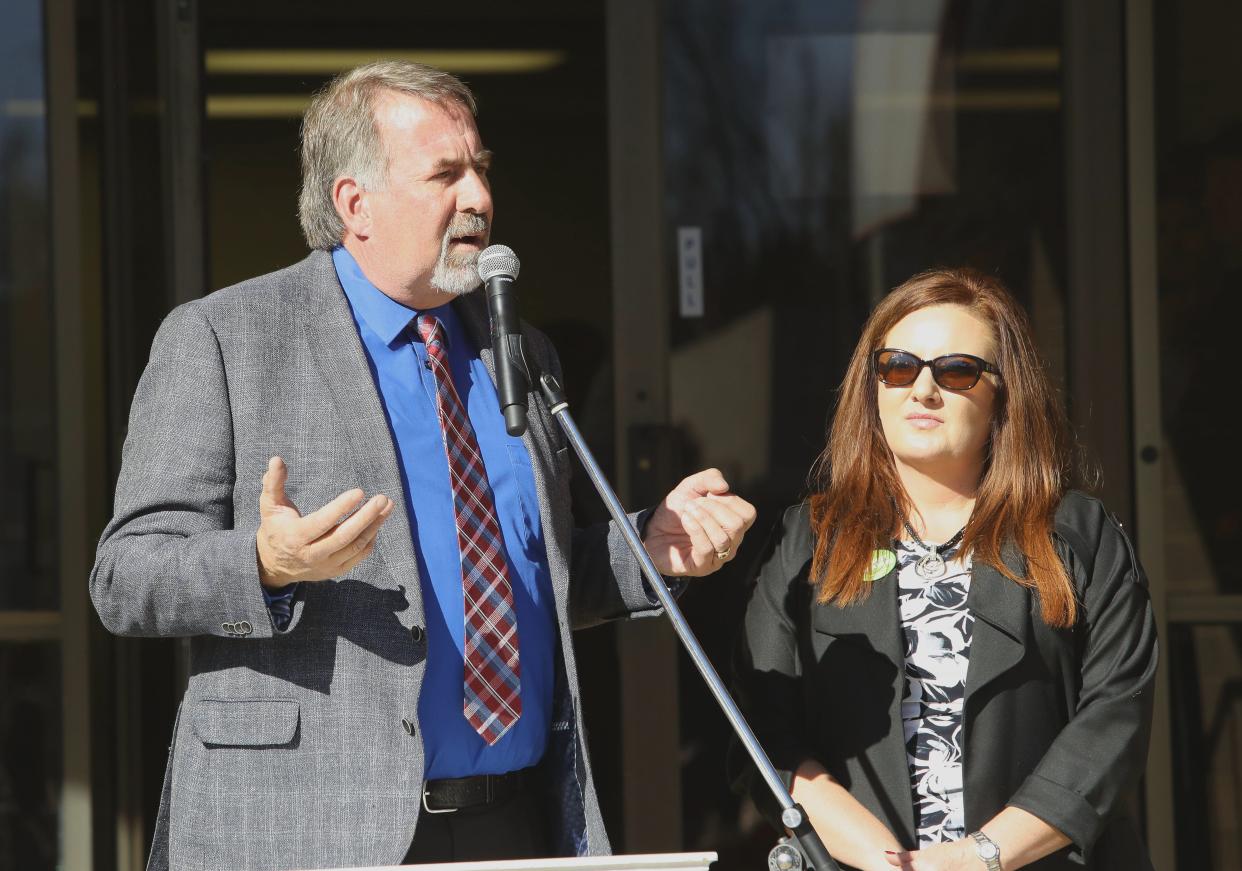Report: Millionaire LaMalfa receives thousands of dollars in ag subsidies

- Oops!Something went wrong.Please try again later.
The family of U.S. Rep. Doug LaMalfa, who represents much of the North State in Congress, received $235,583 in commodity farm subsidies from 2018 to 2021, according to a report released Tuesday.
The subsidies provided to LaMalfa and his family were among 25 granted to members of Congress, according to the Environmental Working Group, which received the information from the U.S. Department of Agriculture.
The LaMalfas' payouts included $90,476 in aid to farmers during the coronavirus pandemic and for retaliatory tariffs placed on U.S. exported goods.
Scott Faber, the Environmental Working Group’s vice president of public affairs, said the group gathered the information about members of Congress because he thought the public needed to know how their tax dollars were being spent, especially since LaMalfa sits on the House Agriculture Committee.
“And what's interesting, some might say troubling, is that eight members of the committee that will vote and really shape the next farm bill themselves receive significant amounts of farm subsidies, including, of course, your congressman, Congressman LaMalfa,” Faber said.
He said serving on the Agriculture Committee while also receiving subsidies poses a conflict of interest.
“It's as if you were getting to fill in the line on your own paycheck every two weeks. Who wouldn't want to do that?” Faber said.
An EWG report released Tuesday says that since 1995 LaMalfa’s family has received about $5.5 million. LaMalfa holds a 33% share of the family business, which means he received about $1.8 million in subsidies from 1995 to 2021, the report says.
Neither LaMalfa, nor press aide, Alexandra Lavy, responded to email, text and phone messages left with them. LaMalfa is a Republican rice farmer who lives in Butte County.
As a traditional conservative, he has supported limited government, reduced taxes and less regulation on farmers and businesses.
In a newsletter issued in February he blamed government for higher food prices and shortages.
“Time and time again America has proven that it is great, but over-regulation stifles that greatness. Farmers know how to grow food and have done so for generations, but government over-intervention has caused food shortages and increased prices,” he said in his newsletter.
The USDA has several programs to help farmers, such as loans and price support assistance. One of those programs provides assistance to farmers when their crops sell for less than market value, Faber said.
According to a study by Texas A&M University's Private Enterprise Research Center, government farm subsidies made up about one-fifth of all farm income in the U.S. in 2019. The government paid about $25 billion annually to farmers through price supports and insurance programs, according to the 2021 study, titled “U.S. Farm Subsidies: A Prime Example of Capital Cronyism.”
Farm subsidies began during the Great Depression of the 1930s as a way to stabilize farmers’ income, but “the economic environment has drastically changed since then, and continued government involvement in offering minimum price guarantees and subsidizing insurance premiums is no longer justified,” the article says.
“Farm subsidies are not efficient, as farmers make decisions about operations and crops based on what will take in the most subsidies and not which ones fetch the best price on the open market,” the study says.
LaMalfa is just one of numerous members of Congress receiving farm subsidies, according to the EWG.
The EWG obtained the farm subsidy information through Freedom of Information Act requests to the USDA, Faber said. The group found that the 25 members of Congress received $14 million from 1995 to 2021. Eight of those congress members serve on the House Agriculture Committee, according to the EWG.
Among members of Congress, Lamalfa appeared to receive the most in farm subsidies, according to the EWG. Rep. David Valadao, R-Hanford, received $5.1 million and Rep. Wiley Nickel, D-North Carolina, received $3.9 million, the EWG said.
LaMalfa was among three members of Congress receiving subsidies who are also millionaires, the EWG said.
LaMalfa had an estimated net worth of $3.5 million as of 2018, while Rep. Robert Aderholt, R-Alabama, had an estimated net worth of $6.3 million and Victoria Spartz, R-Indiana, had an estimated net worth of $1 million.
Members of Congress also receive an annual base pay of $174,000 annually, as of December 2022, according to the Congressional Research Service.
House members are also limited to $28,895 in outside "earned income," according to the research service. But Sarah Graddy, a spokeswoman for the EGW, said most members of congress list their pay from businesses they own as "unearned" income.
Reporter Damon Arthur welcomes story tips at 530-338-8834, by email at damon.arthur@redding.com and on Twitter at @damonarthur_RS. Help local journalism thrive by subscribing today.
This article originally appeared on Redding Record Searchlight: Report: Millionaire LaMalfa receives over $235,000 in ag subsidies

